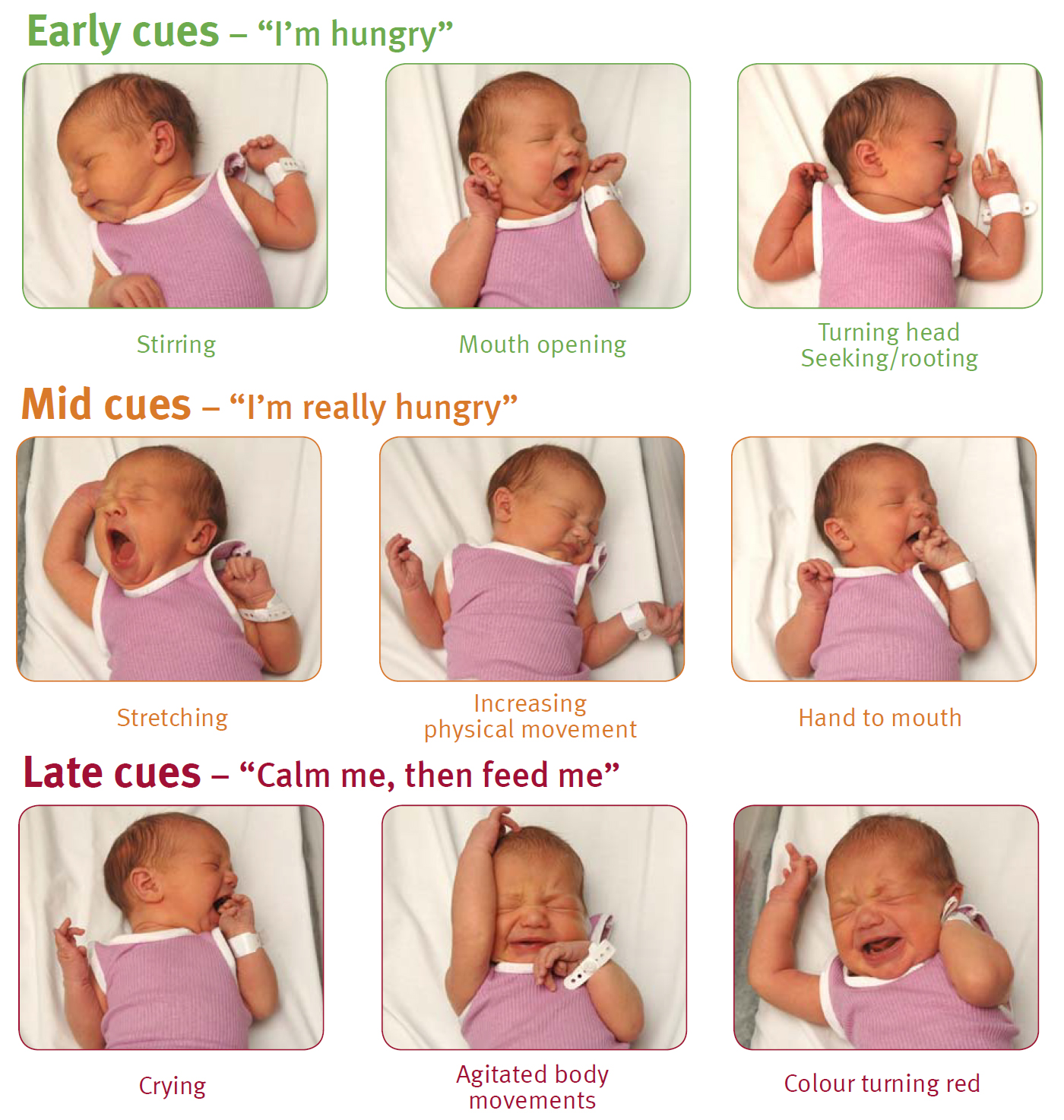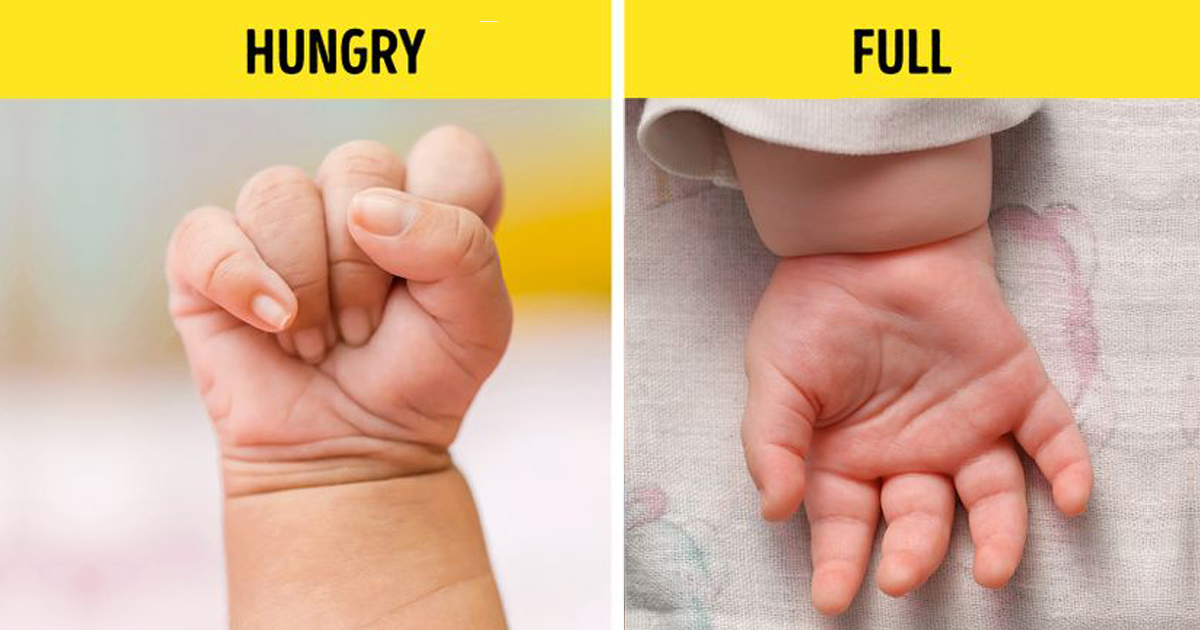The most awaited anticipation among first-time moms is the urge to get the hang of their baby’s hunger cues. They may also be whispering to themselves, “how much to feed or how to know when they’re full”
At first, things might be a tad dodgy, but you will sync in eventually. It might be a little tough to notice your newborn’s feeding cues at first, but after 2-3 weeks, you will be able to grasp the subtle little hints. Also, the hints would be clear enough for you to differentiate whether the baby’s full or wants some more!
How To Tell If Your Baby Is Hungry?

Source: Queensland Government
For the record, these are the 8 different ways your baby trying to say he’s hungry:
● Clenched fist
● Swinging arms and legs
● Making faces
● Turning heads in search of mother’s “breast”.
● Wide awake and alert
● Sighing, whimpering, and other baby sounds
● Wiggling around or fidgeting
● Continuous lip-smacking and sucking hands
● A quick succession of opening and closing mouth
Does A Baby Cry When Hungry?
You must have heard people say a baby ought to cry when he’s hungry. However, it’s not completely true. A baby’s cry for hunger is a mere state of distress, a very late sign of “in dire need to be fed.”
Babies will always try to tell you that they’re hungry, in one way or the other, before bursting into tears. As already discussed on knowing if your baby is hungry, you might want to keep your eyeballs attentive towards the hints they throw.
Watching for the signs and feeding them before they start crying is a sensible thing to do. If they start crying, it’s generally harder to latch.
How To Know Your Baby’s Full?
Newborns falling off from their mother’s bre.ast and turning their heads away, their bodies relaxing, or fists wide open- are the clear-cut indications of their “filled tummies“.

If your newbie is feeding on one bre.ast and seems full, try burping him. It’s time you change his diaper if required and then offer him the other brea st. If your baby doesn’t want to latch any further, rest assured he isn’t hungry anymore.
For starters, it is important to note that some newborns may feed on both b reasts, while others may stick to just one side.
Signs Of Hunger In Quick Succession
If you are a tad bit attentive to your baby’s feeding cues rather than forcing the newborn to stick to a schedule, you should be able to notice that he is hungry every hour or so.
When your baby wants to breastfeed in quick succession, you need not be concerned. Some babies do follow this typical feeding pattern known as bunch feeding or cluster. It’s absolutely normal.
Hunger Cues During Growth Spurts
When going through a growth spurt, almost all babies tend to “cannot get enough” breastfeeding. During this period, it may seem like your baby is hungry all the time, and he is never satisfied.
This period is yet another phase of babies being “all-time hungry” because your baby is growing at a blazing pace. Your baby needs all the nourishment possible, so don’t be afraid to offer more frequently.
The abrupt signs of hunger all the time should only last for about a week or so. At the same time, all the extra breastfeeding signals a mother’s body to increase breas.tmilk supply. As mothers try to produce more milk for the growing newborn, babies get back to their usual breastfeeding schedule.
How To Deal With A Baby That Shows No Signs Of Hunger?
Some babies love sleeping all day long, showing no obvious signs of hunger. It doesn’t mean that your baby is never hungry. It would be best if you are extra careful in a situation like this.
Doctors suggest that a newborn needs to be fed at least 8 to 10 times in 24 hours. If we do the math, you need to wake up your baby (even if he doesn’t wake up on his own) every 3 hours to breastfeed.
Babies can feed themselves just fine if they are not fully awake. All you need to do is try to put him near the brea st, and he’ll help himself.

